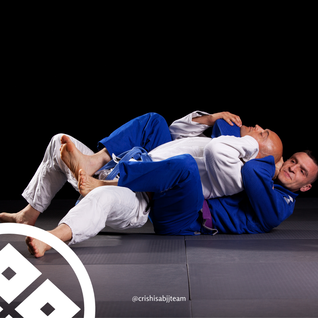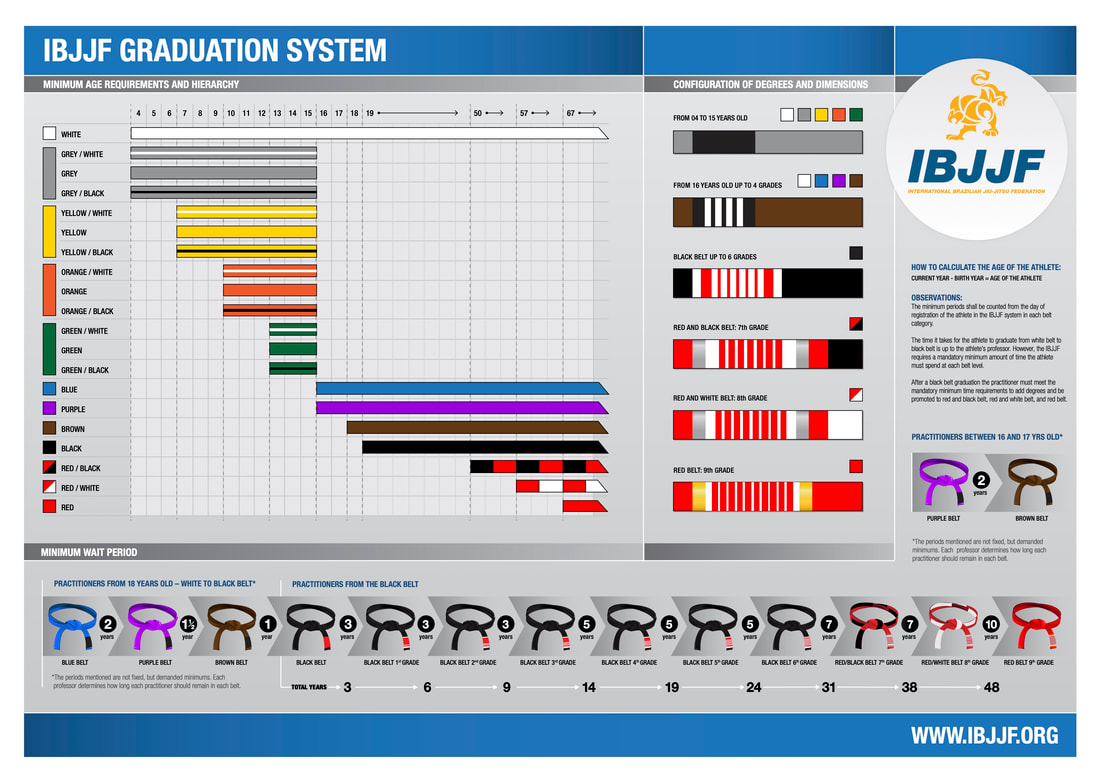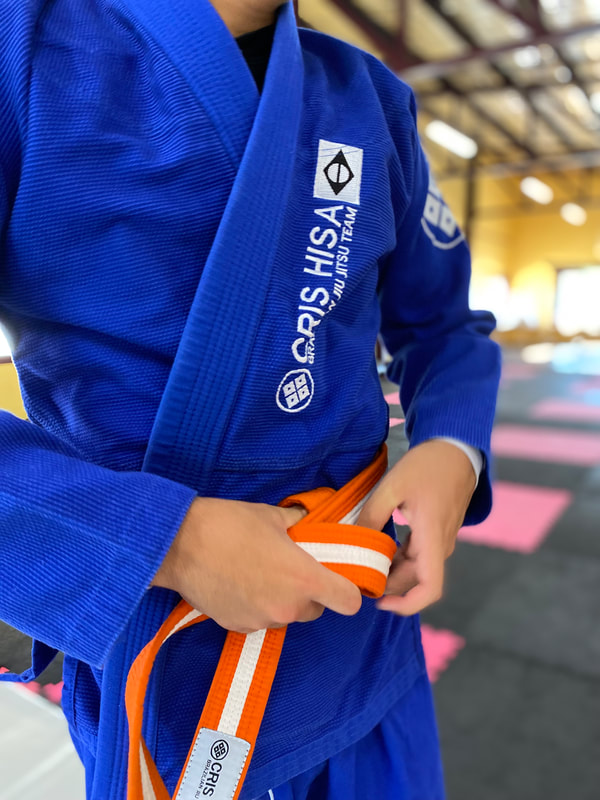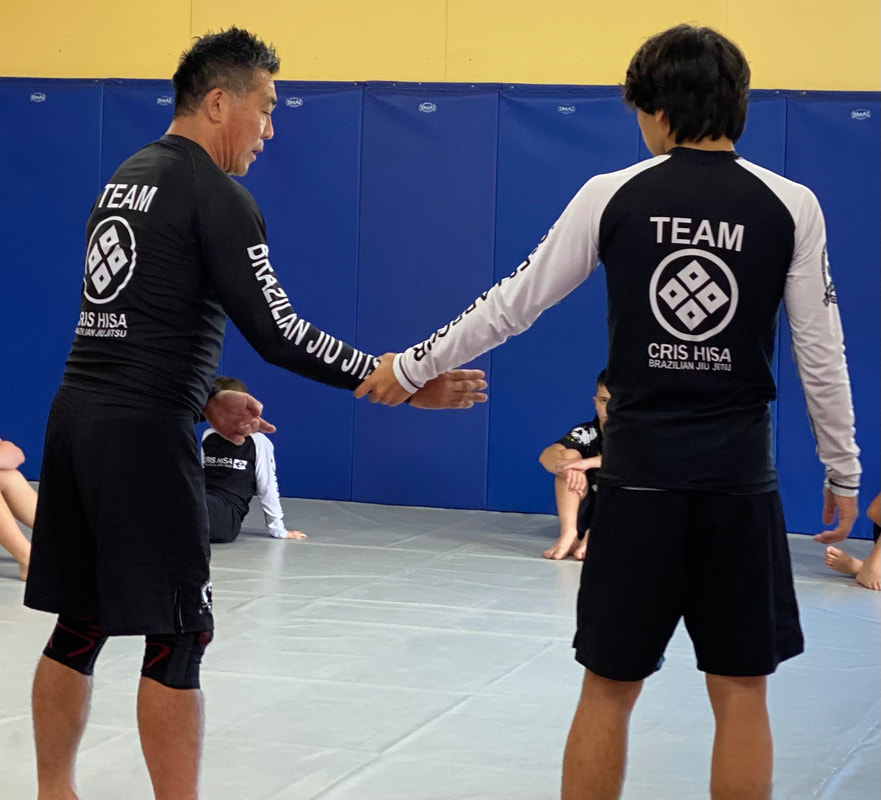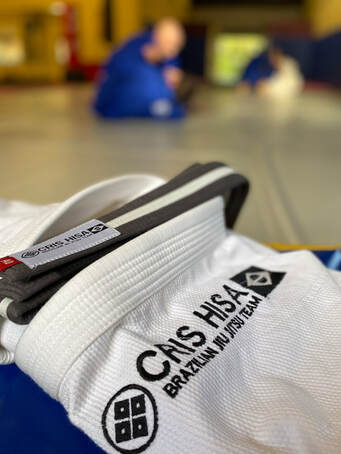If you are new to BJJ we got yah covered with some basics from Gi's to BJJ lifestyle at
Cris Hisa BJJ Team Coffs Harbour.
Style of fighting
Brazilian Jiu Jitsu is dominated by ground-fighting without any striking or kicking. This differentiates it from other martial arts. Another peculiar feature is use of biomechanics and body leverage to triplicate your strength, so anyone can control and dominate an opponent bigger and stronger.
At Cris Hisa BJJ we don't mix our martial arts, we focus on the pure BJJ. There is no room for ego on the mats. Everyone benefits from the safe training environment, which puts people from different background, gender, size, social level, training together and sharing the mats, trusting each other while applying the powerful techniques onto each other.
Below are three of major the ground positions - to learn the rest, you'll have to come along and see by yourself!
At Cris Hisa BJJ we don't mix our martial arts, we focus on the pure BJJ. There is no room for ego on the mats. Everyone benefits from the safe training environment, which puts people from different background, gender, size, social level, training together and sharing the mats, trusting each other while applying the powerful techniques onto each other.
Below are three of major the ground positions - to learn the rest, you'll have to come along and see by yourself!
|
Side Control
In side control, also known as the side mount, the student holds their opponent to the ground from the side of their torso. The student lies across the opponent applying weight to the opponents chest. Applying pressure on either side of the shoulders and hips from the elbows, shoulders and knee's ensures greater control. A wide variety of submissions can be initiated from side control. It is also referred to as the side mount. The position increases the opportunity for the student to advance to other dominant positions. |
BACK TAKE
When taking the back mount position the student attaches to the back of the opponent by wrapping his legs around and hooking the opponent's thighs with their heel or locking in a body triangle by crossing one shin across the waist like a belt then placing the back of the opposing knee over the instep as if finishing a triangle choke. At the same time, wrapping the arms around the chest or neck of the opponent ensures the upper body is controlled. This position is often used to apply triangles, chokeholds, as well as arm bars. The position reduces the opponent's potential size or strength advantage. |
FULL MOUNT
In the mount (or full mount) position, the practitioner sits astride the opponent's front torso or chest, controlling the opponent with his bodyweight and hips. The student works his knees into the opponent's armpits to counter submission attempts and reduce arm movements. Full mount is a technique to apply a variety of other submissions including armlocks or chokes. |
Grading system
The BJJ Grading System is regulated by the International Brazilian Jiu Jitsu Federation.
Adults and Kids BJJ Grading System.
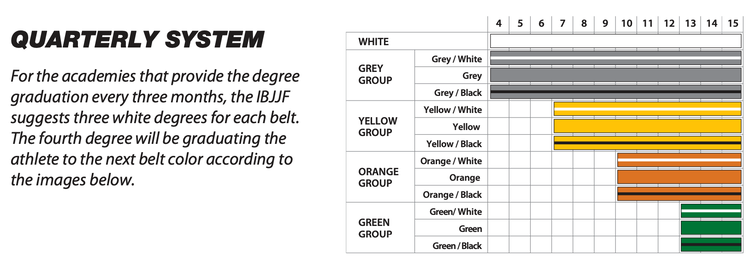
Kids Grading System. At Cris Hisa BJJ Team we follow the Quarterly System for kids.
Uniform
GI
|
BJJ uniform consists of a Gi and no-Gi. The International Brazilian Jiu Jitsu Federation have a set of requirements that schools should meet including: colour, length, patch location etc.
The Gi or Kimono, as it can also be known, consists of a jacket, long pants and the belt. A Gi is thick woven material with *EVA or similar material inside the collar. This aids in gripping and holding your opponent. *EVA - Ethylene vinyl acetate, is an elastic polymer material that is similar to rubber. A rash vest is also worn under the Gi. This is for hygiene and safety reasons. |
No-GI
Belt
|
Your belt tells your grade, eg, black belt, purple, blue, etc.
All your knowledge is stored in your belt, tradition states they should not be washed! The belts are also made with EVA and can be tricky to tie, you will tie them numerous times in one class. Lucky we have a video on how to tie your belt in under 30 seconds on our socials. |
ORIGINS OF THE CRIS HISA BJJ TEAM LOGO
The Cris Hisa BJJ Team logo is made up of 3 parts, the Kamon (or crest) (left), team name in the middle and the Brazilian Flag (right).
This logo represents Cris's heritage, a Japanese/Brazilian born and raised in São Paulo, Brazil.
This logo represents Cris's heritage, a Japanese/Brazilian born and raised in São Paulo, Brazil.
Origins of the Kamon
A Kamon was created to serve as a unique emblem that represented a family’s identity. Later, Buke (Samurai Warriors) and Kuge (the nobility) made use of Kamon, which are classified into groups according to bloodline or historical origin. It was natural for Kamon to be placed on weapons like Samurai sword (Katana) and Samurai armour (Kacchu).
Although Cris and his brothers were born and raised in Brazil, both Cris’s parents have Samurai lineage, so he has two Kamon crests.
Cris chose his mother’s side (Sasaki) because of the geometrical shapes, instead of his father’s side, an intricate floral symbol.
A Kamon was created to serve as a unique emblem that represented a family’s identity. Later, Buke (Samurai Warriors) and Kuge (the nobility) made use of Kamon, which are classified into groups according to bloodline or historical origin. It was natural for Kamon to be placed on weapons like Samurai sword (Katana) and Samurai armour (Kacchu).
Although Cris and his brothers were born and raised in Brazil, both Cris’s parents have Samurai lineage, so he has two Kamon crests.
Cris chose his mother’s side (Sasaki) because of the geometrical shapes, instead of his father’s side, an intricate floral symbol.
THE FOOD OF FIGHTERS
|
Açaí [ Ah-sigh-ee ]
Nothing beats a nice açai bowl! Açaí is a delicous dark berry that grows in Brazil's Amazon rain forests. This superfood is popular with the BJJ community. It is jam packed with lots of benefits a BJJ fighter requires. They are rich in antioxidants, high in essential fatty acids and amino acids which help promote muscle performance, energy production, endurance and strength. They contain Vit C, A, B, B2, B3 and E, calcium, magnesium, zinc and copper. You will often see an açaí stand at a BJJ comp, make sure you try this one first - it's generally the real thing, the açaí should be dark, not light which means it has been watered down with juices! Feijoada brazilian dish [ fay-mwah-dah ]
Feijoada, is considered Brazil's national dish. The name comes from the word feijão, which means bean, an essential ingredient of the dish. Black beans, salted beef and pork come together in a hearty slow cooked stew, traditionally served with rice, collard greens and farofa (toasted manioc flour). Brazilian BBQ
Tried a Brazilian Restaurant? A Churrasco? Been to Brazil and had a local BBQ? Brazilians love their meat... Check out some of our photos of our Team BBQ's. Large pieces of grilled beef (namely the 'picanha' or the rump cap), smothered in salt rocks and lovingly cooked for a fraction of time. Juicy rump cap shared around and dipped in farofa (toasted manioc flour dressed up with complementary ingredients such as onions, olives, nuts, crispy bacon pieces, dried jerky, or fresh herbs). |
SENHOR DO BONFIM RIBBONSAttach the bracelet to the wrist by making 3 knots. At each node a vow. Once the Senhor do Bonfim ribbon falls off the wrist on its own, according to the common belief the 3 wishes will come true. Good luck!
For each color, a signification and a divinity (Orixas) of the Candomblé (the Afro-Brazilian religion founded by the slaves). Blue - Iemanja, goddess of the sea - Love Rose - Oba, the god of the winds - Friendship Yellow - Oxum, goddess of beauty - Success Green - Oxóssi, god of animals and food - Health Orange - Inhasa, goddess of wind and fire - Happiness Violet - Nana Buruku, the wife of Oxala - Spirituality Red - Exu, the god of ways - Passion White - Oxala, the oldest god who gave life to men - Peace On special occasions, we will hand out ribbons as part of your Brazilian BJJ lifestyle experience with us. You can't fake Brazilian! |
Jiu Jitsu language
|
Unique to Cris Hisa BJJ Team is an instructor with Japanese and Brazilian heritage! The best of both worlds in one!
Cris was born and raised in São Paulo, Brazil. His parents immigrated from Japan to Brazil to start a new life and family. The Jiu Jitsu language you will hear at academy's, seminars and competitions is very much informed by the Japanese language; where Jiu Jitsu all started!!! |
|
"Oss" [oh-ss] doesn’t have a single meaning in Japanese. You will hear competitors use it before they enter the mats, you will also hear it on the Japanese rugby field and many other sports. Oss is used as a greeting, sign of respect, compliment and/or encouragement.
"Tatame" [tat-a-may] means "mats". It comes from the verb “tatami” which means “to fold” or “to pile”. They were originally made from rice straw and a woven soft rush. "Gi/Kimono" In different parts of the world, different terms are used for the clothes we wear to training BJJ. In most cases, people say Gi, which describes gym clothes, or training clothes. The word “Kimono”, on the other hand, only refers to clothing in general. However, in some countries, like Brazil, people use it to describe the Gi's we use to train BJJ in. "Jiu Jitsu", the word derives from the Japanese “Jū” meaning “gentle” and “Jutsu” meaning “art”; essentially, jiu jitsu is the “gentle art”. |


